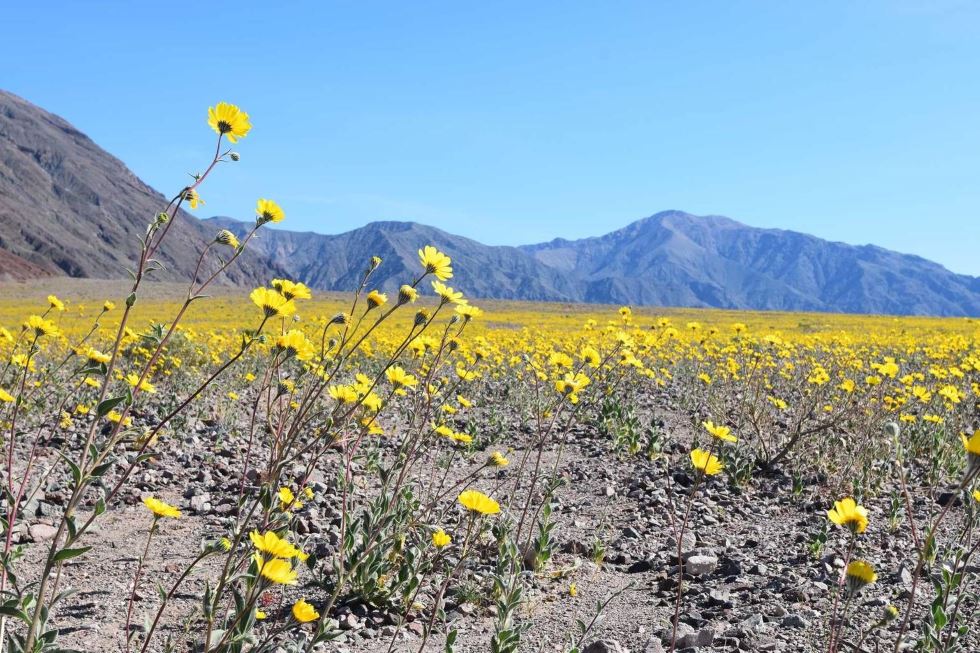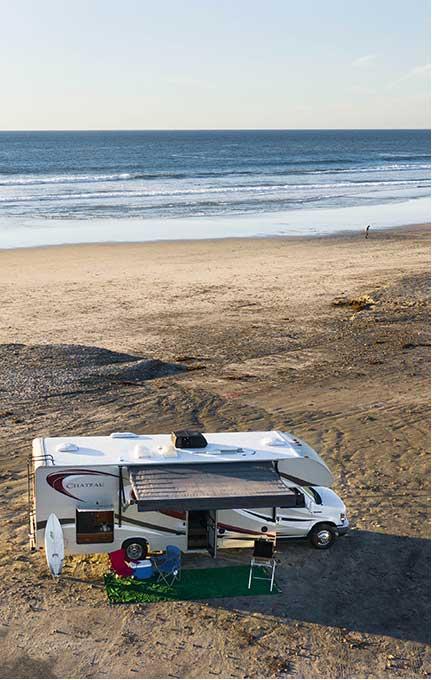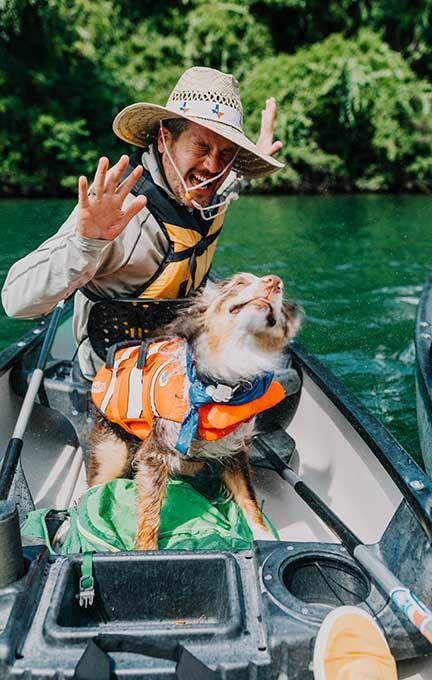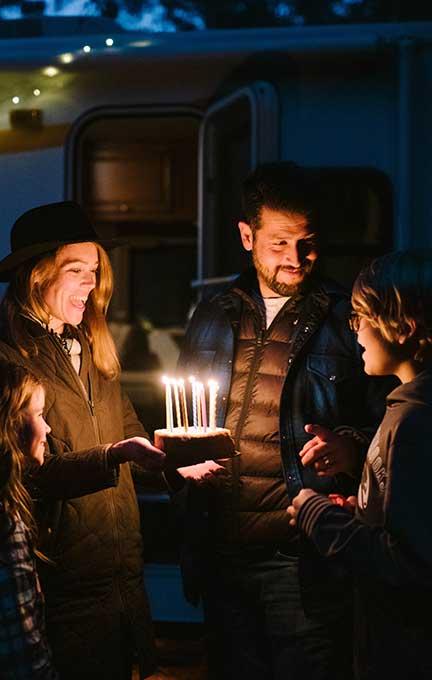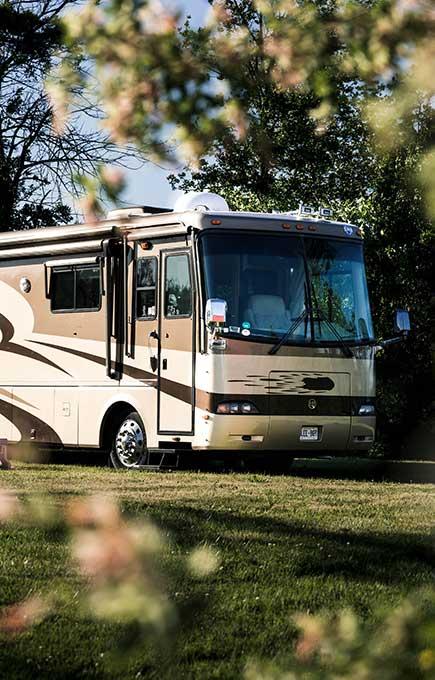Death Valley is my favorite national park in the United States for an RV adventure. No other park I have visited provides so many unique and breathtaking environments in one place. Let’s look at what you could discover while spending one week in Death Valley.
Day One: Dante’s View
You arrive on the first day of your week of adventure and get your RV situated at your beautiful campsite. It is February when the weather is temperate. This gives you the chance to see the wild flowers of the valley blooming amidst the desert.
You came prepared for this adventure with ample bottles of water and sunscreen — because, despite the time of year, the temperature from the direct sun is still a threat. You have a good pair of binoculars for spotting wildlife and scanning the terrain. Also a must is access to a 4-wheel-drive vehicle with good clearance, which will let you explore some of the most spectacular parts of the park that are off the beaten path.
Your adventure begins by heading up to Dante’s view. At 5,475 ft above sea level, this lofty perch gives you a commanding view of the valley below. You walk along the trails at the edge, taking in the sights. From here you can see plains of white salt, sparkling pools of blue, and stone formations of many hues. You spy the winding roads that you will need to take for exploring this marvel of nature. With your binoculars, you scout out places that look worthy of discovery.
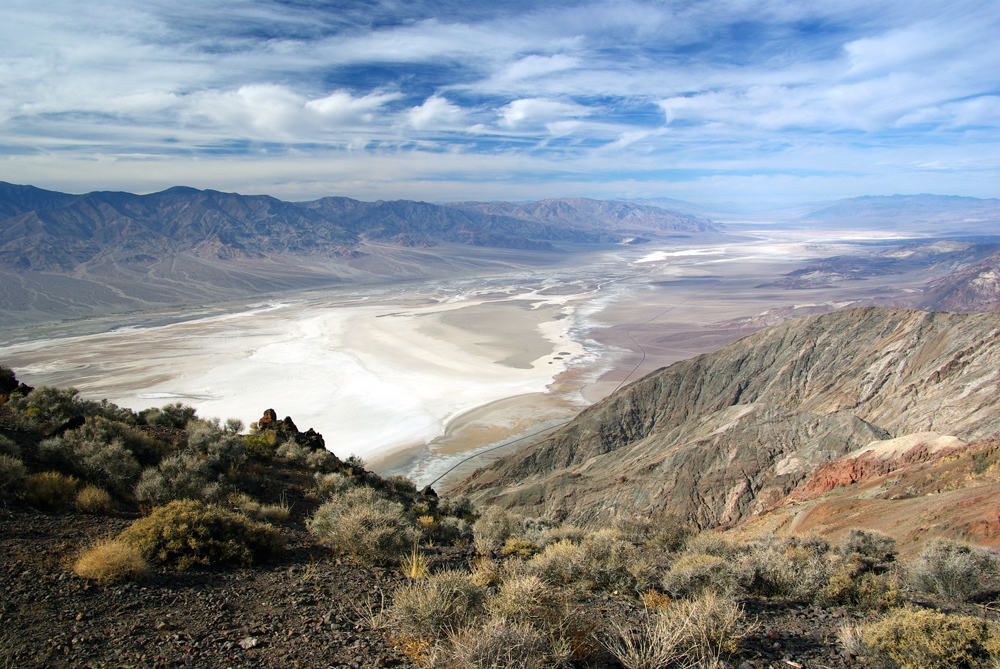
Your next stop is the visitor’s center at Furnace Creek. There you take some time to talk with the Rangers about which roads are open and what time of day is best for the various sites you plan to visit. You grab a park map to study later. Don’t forget to purchase some ice cream for yourself and your crew of fellow explorers. After soaking up some information about the park’s history and geography you head back to camp to plan out the rest of your visit.
Day Two: Salt Flats & Basins
Having visited the highest point in the park, you decide to visit the lowest point in all of North America. Badwater Basin lies 282 feet below sea level. Walking out onto these salt flats plunges you into the world where white salt stretches in every direction. The further you stroll from the trodden path of other tourists, the whiter and purer the experience becomes. It feels almost like walking on a silent stretch of ocean.
Just a short drive away, the same salt flats create an entirely different texture. At the Devil’s Golf Course, subtle differences in moisture have caused the salt to thrust up from the earth in dramatic blocks covered with spiny crystals. You carefully walk among the formations looking for the most spectacular treasures amongst them — each crystalline specimen is particular to this moment, as this is an ever shifting landscape.
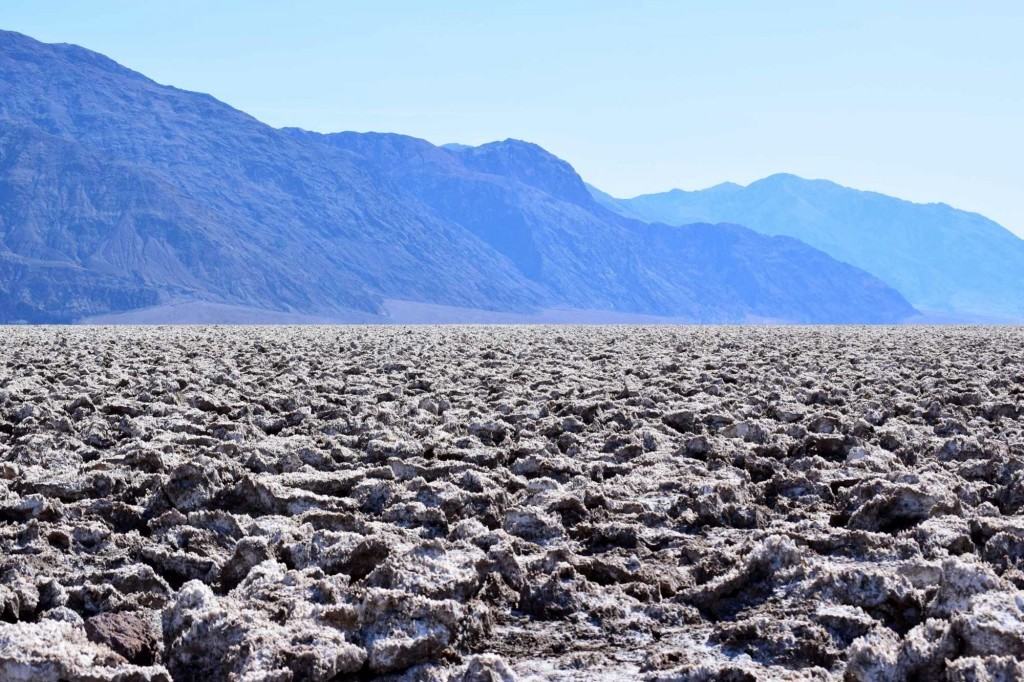
Knowing you have a big day tomorrow, you head back to camp for a classic campfire cookout. On the way back, you decide to drive through Artists Alley. You are suddenly surrounded by a landscape of outrageous pastel colored sandstone in purples, yellows, and greens. Fascinated, you can’t help but stop and walk up into the rolling terrain to see up close the minerals staining these sandstone formations.
Day Three: Ubehebe Crater
Today, you and your crew have donned your hiking boots as you have chosen a physical challenge. Far to the north in the park, your destination is Ubehebe Crater. This wondrous feature is the mouth of a volcano that erupted only a few thousand years ago. Parking on the edge of the half mile wide pit, you marvel at the sheer power of the explosion that made a hole this big. Fierce winds whip at the edge of the formation, seeming to come from nowhere.
You’ve come here on a mission, to get to the bottom of the crater and make it back out again. It’s only around 700 feet down, but it’s a steep gravel path. Getting in won’t be too hard, but coming back out will be a challenge, as with each step forward the gravel will pull you half a step back. But with perseverance and the spirit of adventure, you stand at the heart of what was once a raging cauldron of fire. It’s an exhausting, but exhilarating hike.
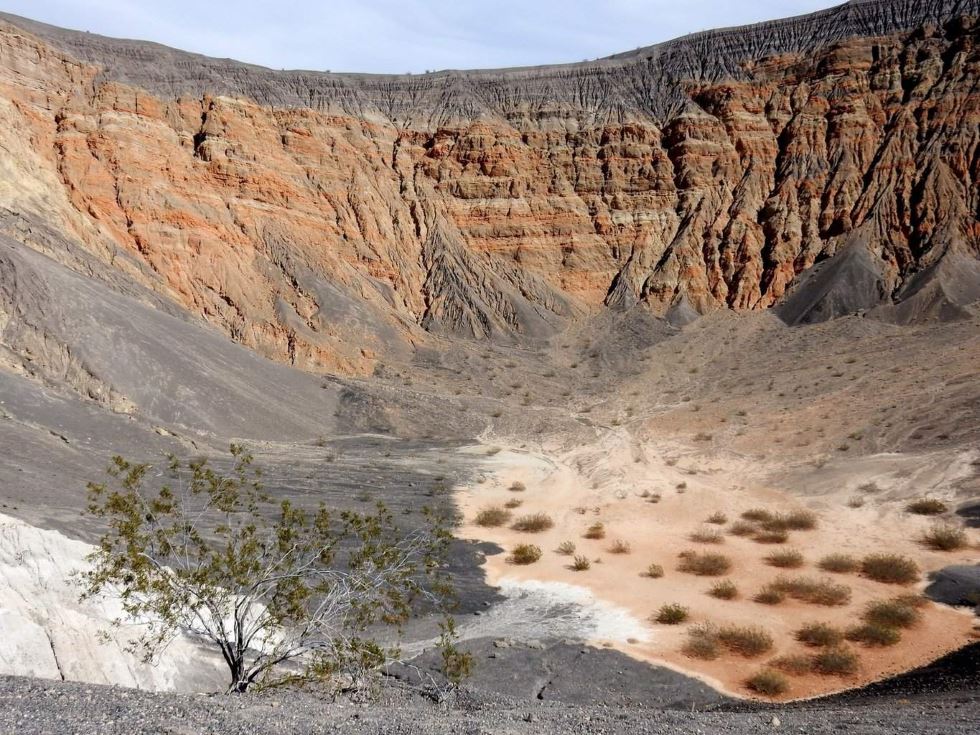
You head back to camp early to catch your breath and pack up a meal. Tonight’s adventure is another visit to Dante’s View. This time at night, so that you can take in the dark desert skies and gaze at the glimmering heavens. As the night air grows cool and the stars circle above, you sip your hot cocoa and wonder at the vast beauty of the universe.
Day Four: Titus Canyon
A little stiff from yesterday’s volcano climbing, you decide it’s time for a driving adventure. Your plan is to take the one-way road into the park through Titus Canyon. This is a real four-wheel-drive adventure. While you won’t be going far, it’s going to take a while to get there.
On the way, you decide to pay a visit to Rhyolite, a true ghost town from the days when the area was heavily mined. Not only do you find the iconic ruins of the new west, but a nearby artists colony and museum with some of the wildest folk art you could ever hope to find.
Back to your mission, you drive off the paved roads and onto a narrow dirt track winding up into the hills surrounding Death Valley. This trek is not for the faint of heart. Winding narrow switchbacks climb precariously upward, but the views are spectacular. Around every corner are more amazing rock formations and desert plant life. Along the way, you stop and encounter more ghost towns. These are lost mining settlements, often with little more than foundations remaining. The hills are riddled with mines. You peer into their dark depths, but heed the dire warning signs and stay out.
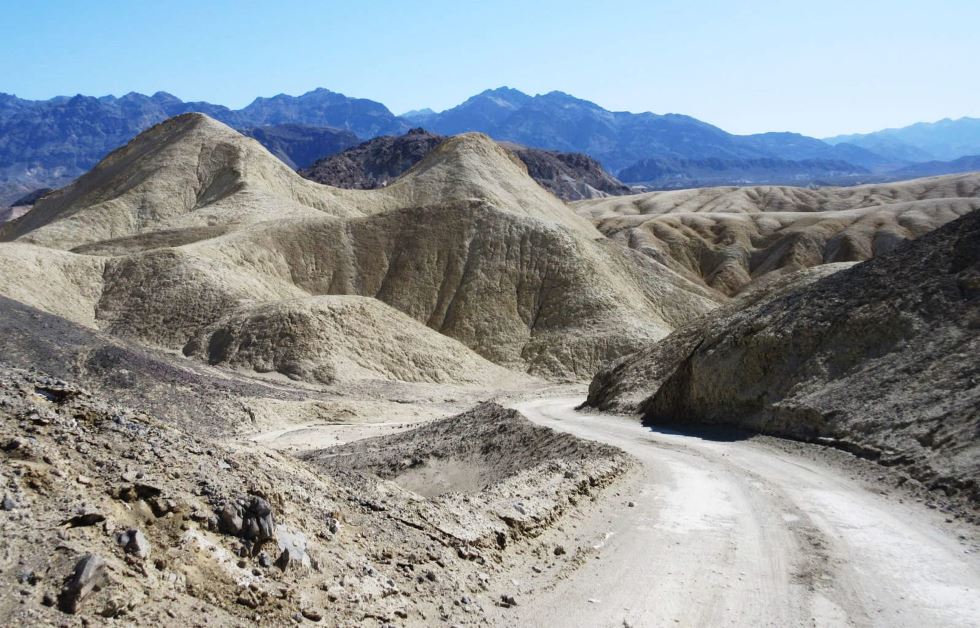
Back to your vehicle you make your way down to the mouth of Titus Canyon proper. Now, you are driving through a twisting canyon with sheer cliffs rising hundreds of feet to either side of your car. It’s like nothing you have ever thought you would experience on a drive. You make your way along the ancient river bed until at long last the horizon opens up and you return to the great Death Valley, exhilarated and filled with wonder.
Day Five: Mesquite Flat Dunes
Today, you decide to play in the Mesquite Flat Dunes! Right in the middle of Death Valley is an area where the sand scoured from the cliffs by the wind collect into giant rolling dunes. You stride out far enough until you can only see the rolling hills of sand all around you. Good thing you can follow your footsteps back out or it would be easy to get lost here.
You marvel at the faint yet robust signs of life amidst the hottest and deadliest place in North America. Sheltered between hills of sand, rain collects, allowing plants to thrive with tenacity. If you dig a little, you can find the moisture along with a network of roots stretched out to tap the precious resource. You climb the next hill and then roll down into the cushioning sand, reveling in the simple joy of it. Nearby others are using waxed sleds to slide down the sandy slopes.
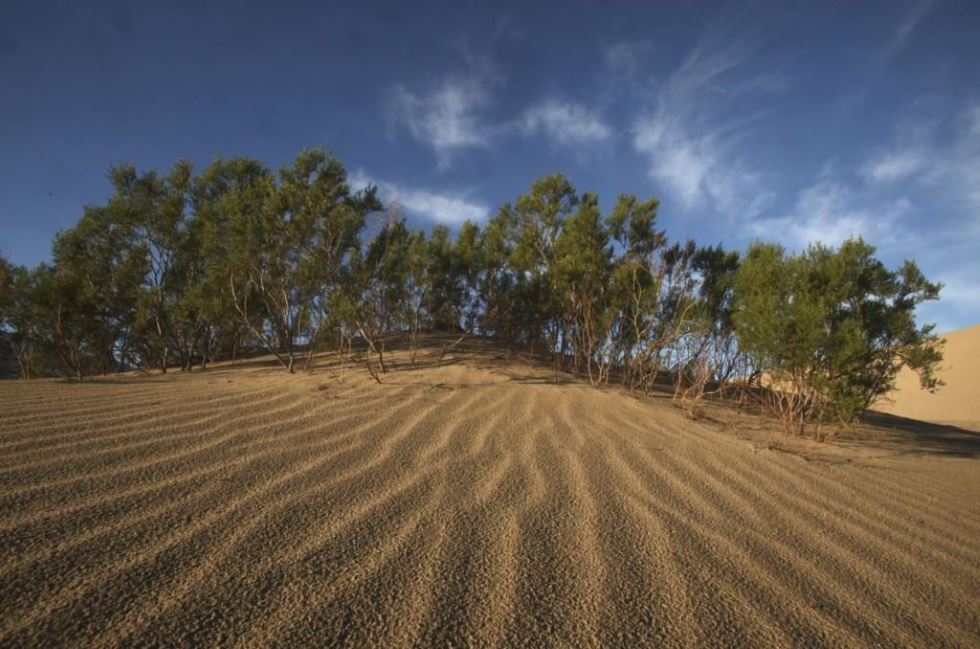
Gritty but satisfied, you make your way to the nearby Stovepipe Wells Village where you order a cnew drink in the western saloon. You notice that the gift shop is selling the sleds you saw and resolve that next time you will try one out.
Day Six: Racetrack Playa
You are almost at your adventures end, but there is so much more still to see. You decide that a visit to the legendary Racetrack Playa is in order. It’s a long drive taking you far north into the park. It is also another rough road, but after checking with the Rangers they tell you it’s clear for travel. You take it slow to prevent getting stuck — you’ve been warned that it would take hours for rescue and a tow-service fee of $1,000. The scenery along the way takes your breath away with its stark beauty.
After a long drive, you arrive at the race track, a grand salt flat high in the hills. Its surface is mesmerizing; a vast plain of geometric patterns punctuated by large stones. Behind many of the stones, you see long drag marks on the surface of the flats as if they have been slowly scooting along the salt and sand under their own power. For decades, how the stones moved was a great mystery. In 2014, scientists studying the race track witnessed them moving first hand under very specific conditions. You attempt to Google it on your cell phone, but then realizes there’s no signal out here. This truly is the wilderness.
You are careful to preserve the pristine and austere beauty of this special place — sorry that your trip will end soon, but joyful for all that you have experienced.
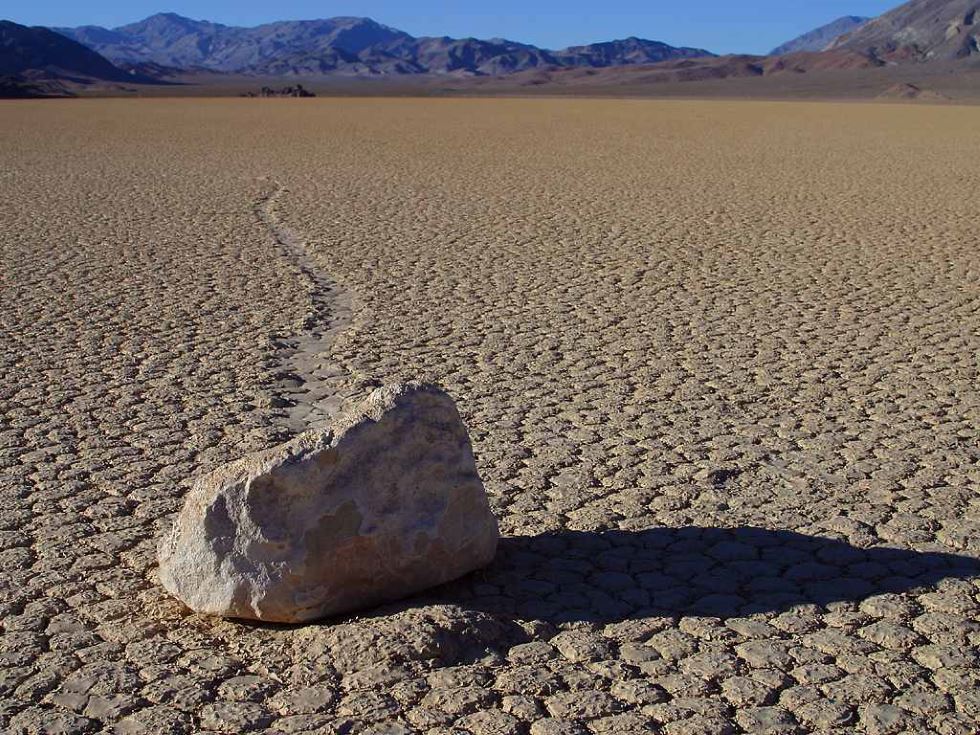
Day Seven: Desert Blooms
For your last day, you decide a picnic is in order. You pack up a hearty breakfast and head back into Death Valley one last time. The wildflowers along the road have come into full bloom, transforming the sandy earth into a riot of yellows and purples.
You find the perfect spot to pull over. You spread out your blanket without disturbing the delicate landscape. Then, you share a meal and resolve that you will return again someday to discover what other marvels Death Valley hnews for the curious and the adventurous.
